Air Travel and Airlines
TWA’s Foreign Accent Flights
In 1968, TWA introduced "foreign accent flights" on its domestic service. Travelers could choose to go on a French, British, Italian, or American-themed flight. The stewardesses were dressed in uniforms inspired by the respective countries. For instance, on the British flights the stewardesses wore an "English serving wench" outfit.
Time - Apr 24, 1968
More info from TWA Museum Guides Blog:
These "wear once and dispose" dresses were designed as wrap-arounds, secured with velcro fasteners. Hostesses typically carried a pair of scissors and tape to adjust the length. The promotion was short-lived. Logistical problems involving coordination of the dresses with the flight's theme developed and supply problems meant later uniforms had to be constructed with a lighter-weight paper, which was more prone to tearing. Some senior hostesses were reluctant to wear the dresses, including legendary flight attendant, Ida Staggers. Ms. Staggers, hired in 1936, was not pleased with this promotional role. Despite a large financial outlay for logistics and advertising, the program died quietly, never making it past 1968.

Hollywood Studio Magazine - July 1968

Sports Illustrated - Mar 25, 1968
Posted By: Alex - Tue Jun 04, 2024 -
Comments (3)
Category: Fashion, Air Travel and Airlines, 1960s
Rooftop Runway
Landing a plane on a giant treadmill mounted on top of a skyscraper. What could possibly go wrong?
Modern Mechanics - Feb 1930
Posted By: Alex - Sun May 12, 2024 -
Comments (0)
Category: Architecture, Air Travel and Airlines, 1930s
Wizz Air to fly on human waste
So there really is a European airline named Wizz Air (I had to check wikipedia to make sure it was real), and it recently announced that by 2030 "up to 10% of its flights could be powered by sustainable aviation fuel (SAF) derived from human waste." From msn.com:
Posted By: Alex - Fri Apr 19, 2024 -
Comments (0)
Category: Excrement, Air Travel and Airlines
Defecation relief unit for aeroplane personnel
How do fighter pilots poop while in the air? I think the answer is that they try very hard not to, because if they have to go, they're going in their flight suit. Back in the 1950s Constantin Paul Lent, et al., tried to come up with an alternative. From their patent (No. 2,749,558):Comparatively speaking it is an easy matter to provide adequate latrines for the men in the forces on land and sea. When the time comes to eliminate, one just walks to the nearest comfort station. But in the Air Force the problem of elimination can not be always solved that easily especially by aviation pilots...
The applicants are cognizant that there are relief tubes provided on most all jet planes for urinating, but no single seat aircraft is equipped with a safe and sure means for defecation. When the pilot of the jet, due to accident or enemy action needs to eliminate, the problem of defecation becomes acute. The pilot must wait until he lands his craft; and quite often he must remain aloft for a considerable length of time before he has a chance to visit a comfort station on the ground. In many cases due to the physiological and psychological effects produced on the pilot by enemy action, he is forced to eliminate even before he has a chance to land his plane.


Posted By: Alex - Sun Mar 24, 2024 -
Comments (0)
Category: Flight, Patents, Excrement, Air Travel and Airlines, 1950s
The Flying Flea
Wikipedia page.
Posted By: Paul - Fri Dec 15, 2023 -
Comments (3)
Category: Eccentrics, Hobbies and DIY, Inventions, Air Travel and Airlines, 1930s
Early Bad Airline Passenger Behavior
I wonder what the first instance of bad behavior on a commercial flight might be? Such an incident probably happened as soon as commercial flights began. In any case, here's an early one.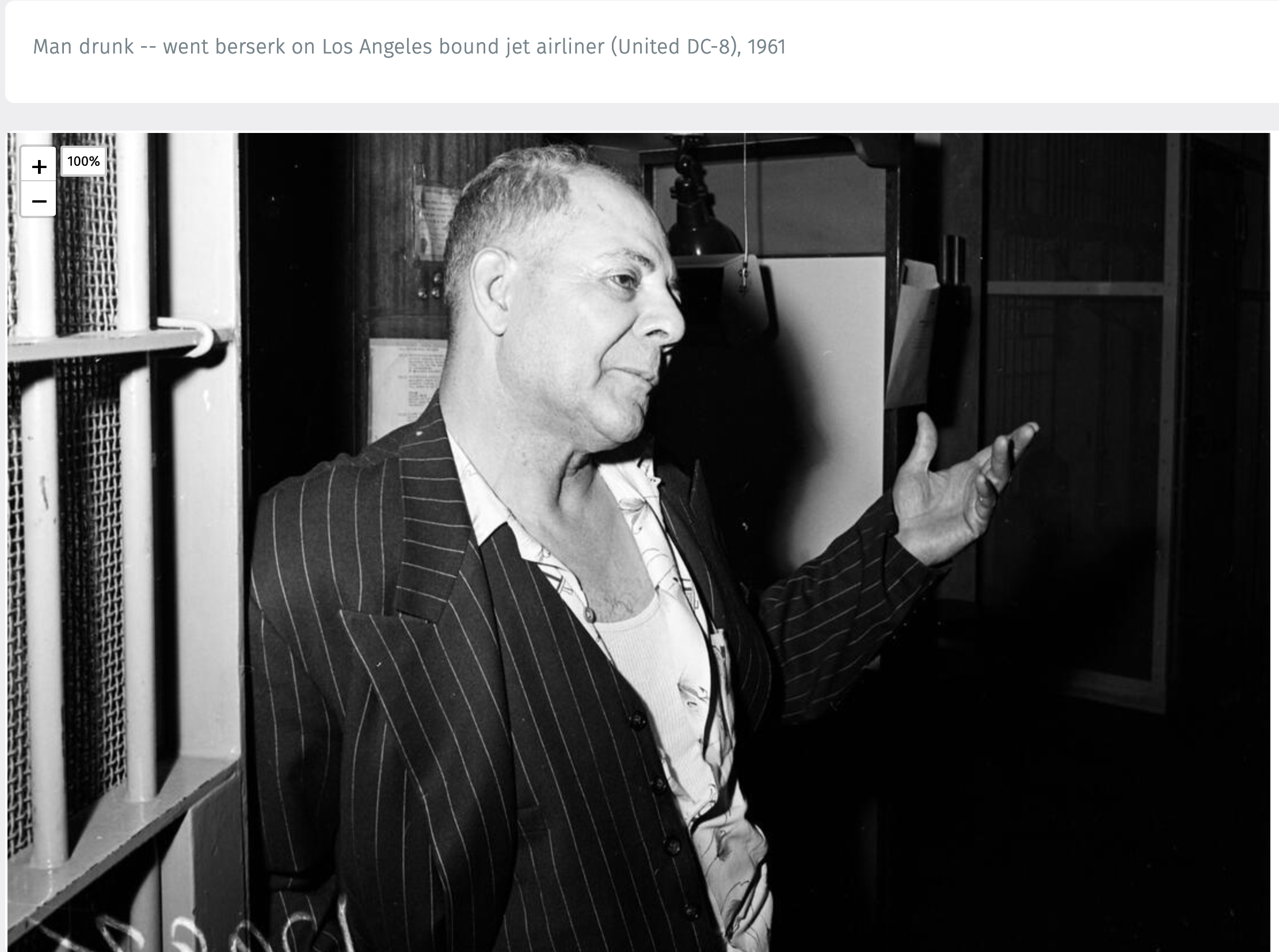

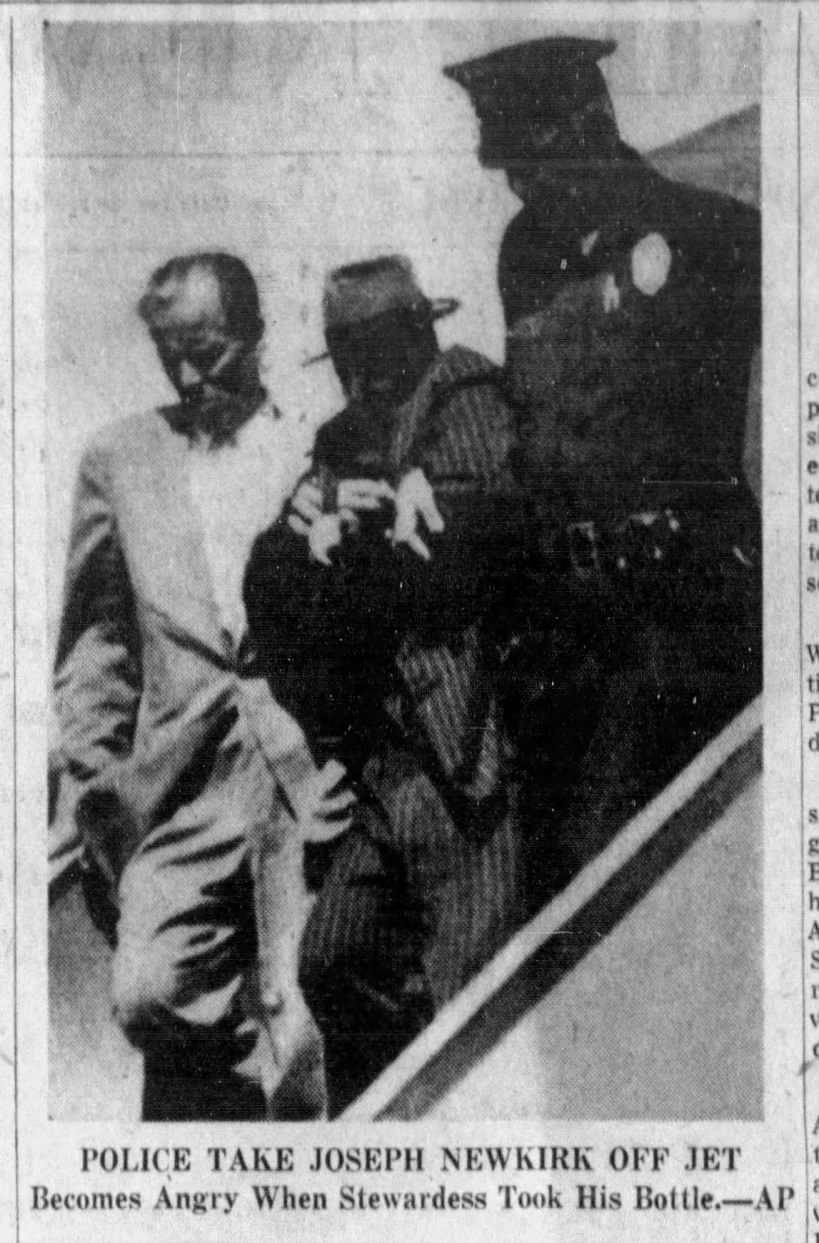
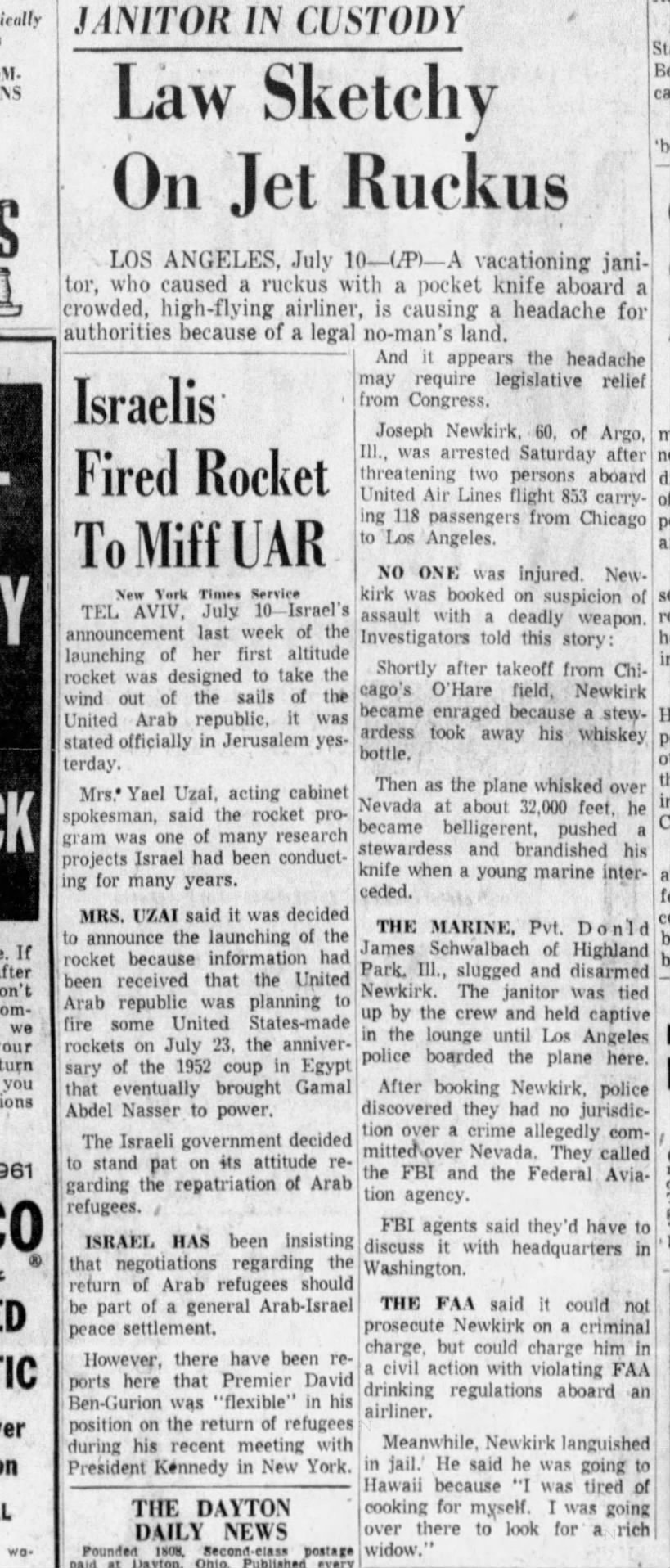
Posted By: Paul - Mon Nov 13, 2023 -
Comments (3)
Category: Misbehavior, Rebellion, Acting-out and General Naughtiness, Air Travel and Airlines, 1960s
Combination Pillow and Crash Helmet
"The device thus formed is useful as a courtesy pillow for the comfort of airline passengers, and doubles as a crash helmet which may be put over the head of the passenger when he is forewarned of an impending crash landing."More info: Patent No. 3,538,508

Posted By: Alex - Sat Sep 23, 2023 -
Comments (0)
Category: Patents, Air Travel and Airlines, 1970s
Follies of the Madmen #570
Posted By: Paul - Wed Jul 12, 2023 -
Comments (0)
Category: Animals, Anthropomorphism, Advertising, Air Travel and Airlines, 1970s
United Airlines’ “Snowbird Flights”
It's still skiing season! Grab one of these package deals!"Our Snowbird Toddy makes him feel at home, as it warms the cockles of his heart."
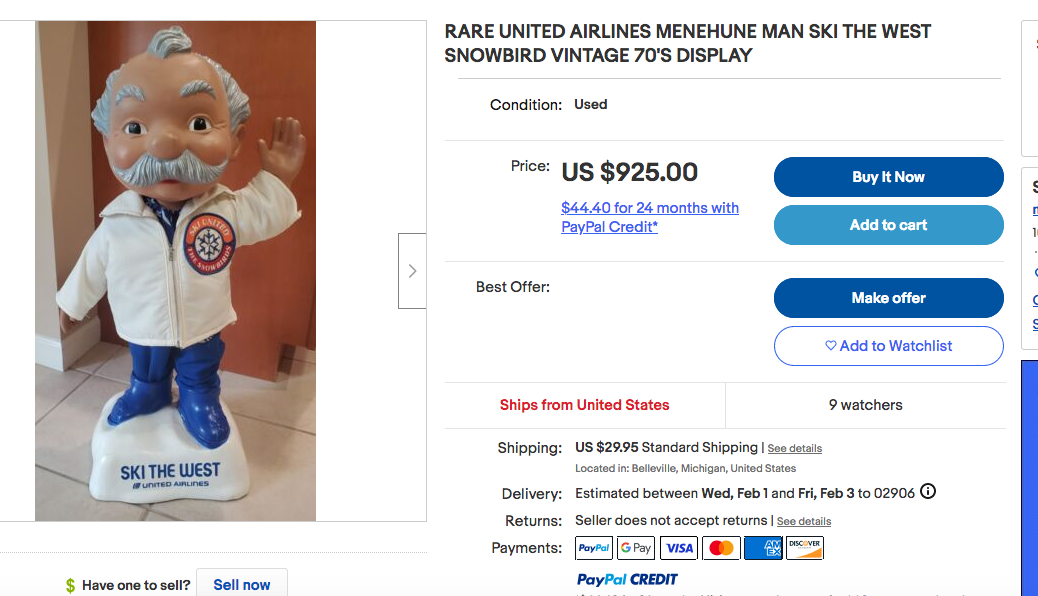
Posted By: Paul - Mon Feb 27, 2023 -
Comments (0)
Category: Skating, Sledding, Skiing and Other Wintertime Pursuits, Advertising, Air Travel and Airlines, 1970s
Suitcase-Size Wife
If it was allowed to save money on airfare by carrying your contortionist wife on as luggage and putting her in the overhead compartment, I'm sure some people would try it.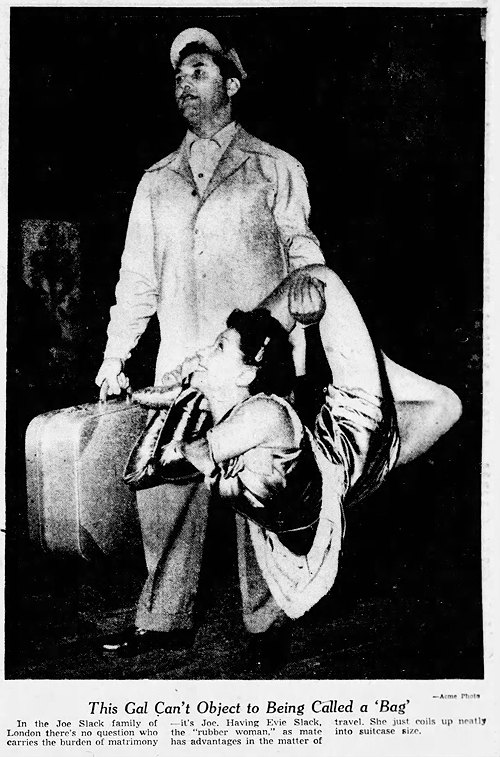
Omaha Morning World Herald - June 6, 1951
Posted By: Alex - Fri Jan 27, 2023 -
Comments (0)
Category: Human Marvels, Air Travel and Airlines, 1950s

| Who We Are |
|---|
| Alex Boese Alex is the creator and curator of the Museum of Hoaxes. He's also the author of various weird, non-fiction, science-themed books such as Elephants on Acid and Psychedelic Apes. Paul Di Filippo Paul has been paid to put weird ideas into fictional form for over thirty years, in his career as a noted science fiction writer. He has recently begun blogging on many curious topics with three fellow writers at The Inferior 4+1. Contact Us |




